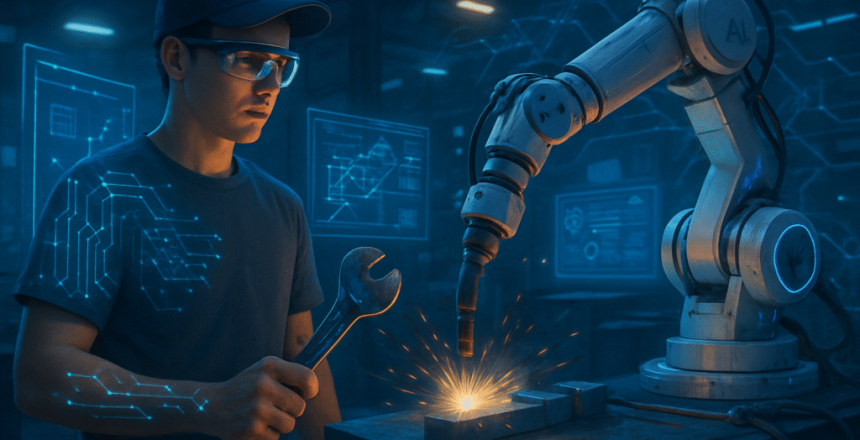The relentless march of Artificial Intelligence (AI) is dramatically reconfiguring the global employment landscape, ushering in an era where the perceived security of traditional white-collar professions is being challenged. Far from rendering human labor obsolete, AI’s increasing sophistication in automating repetitive tasks is paradoxically sparking a renaissance in blue-collar industries and skilled trades. This seismic shift is profoundly influencing career aspirations, particularly among Generation Z, who are increasingly turning away from four-year degrees in favor of vocational training, recognizing the enduring value and AI-resilience of hands-on expertise.
Recent developments indicate that while AI and advanced automation are streamlining operations in sectors like manufacturing, construction, and logistics, they are simultaneously creating a robust demand for human skills that AI cannot replicate. This includes complex problem-solving, manual dexterity, critical decision-making, and direct human interaction. As AI takes on the mundane, it elevates the human role, transforming existing jobs and creating entirely new ones that require a blend of technical acumen and practical application.
AI’s Precision Hand: Augmenting, Not Eradicating, the Trades
The technical advancements driving this transformation are multifaceted, rooted in breakthroughs in machine learning, robotics, and large language models (LLMs) that allow for unprecedented levels of automation and augmentation. Specific details reveal a nuanced integration of AI into blue-collar workflows, enhancing efficiency, safety, and precision.
One significant area is the deployment of AI-driven robotics and automated machinery in manufacturing and construction. For instance, AI-powered Computer Numerical Control (CNC) machines are achieving higher precision and efficiency in material processing, from cutting intricate designs in stone to shaping metals with microscopic accuracy. In construction, robotic bricklayers, autonomous surveying drones, and AI-optimized material handling systems are becoming more common. These systems leverage computer vision and machine learning algorithms to interpret blueprints, navigate complex environments, and execute tasks with a consistency and speed that human workers cannot match. This differs from previous approaches, which often relied on simpler, pre-programmed automation, by incorporating adaptive learning and real-time decision-making capabilities. AI systems can now learn from new data, adapt to changing conditions, and even predict maintenance needs, leading to fewer errors and less downtime. Initial reactions from the AI research community and industry experts highlight this shift from mere automation to intelligent augmentation, where AI acts as a sophisticated co-worker, handling the heavy lifting and repetitive tasks while humans oversee, troubleshoot, and innovate. Experts point out that the integration of AI also significantly improves workplace safety by removing humans from hazards and predicting potential accidents.
Furthermore, the rise of predictive analytics, powered by machine learning, is revolutionizing maintenance and operational efficiency across blue-collar sectors. AI algorithms analyze vast datasets from sensors (Internet of Things or IoT devices) embedded in machinery and equipment, such as temperature, vibration, pressure, and fluid levels. These algorithms identify subtle patterns and anomalies that indicate potential failures before they occur. For example, in HVAC, marine construction, mining, and manufacturing, ML systems predict equipment breakdowns, optimize maintenance schedules, reduce unplanned downtime, and extend equipment lifespans. This proactive approach saves costs and enhances safety, moving beyond traditional reactive or time-based scheduled maintenance. In quality control, ML-powered apps can process images of weld spatter pixel by pixel to provide quantitative, unbiased feedback to welders, accelerating competency buildup. Large language models (LLMs) are also playing a crucial role, not in direct physical labor, but in streamlining project management, generating safety protocols, and providing on-demand technical documentation, making complex information more accessible to on-site teams. Technicians can use LLMs to navigate complex repair manuals, access remote expert assistance for troubleshooting, and receive guided instructions, reducing errors and improving efficiency in the field. This blend of physical automation and intelligent information processing underscores a profound evolution in how work gets done in traditionally manual professions, offering real-time feedback and adaptive learning capabilities that far surpass static manuals or purely theoretical instruction.


